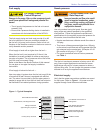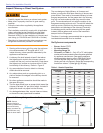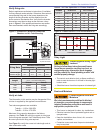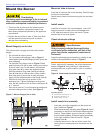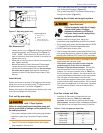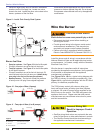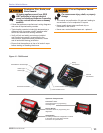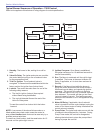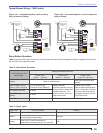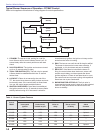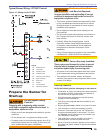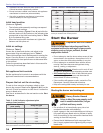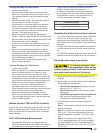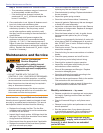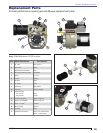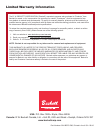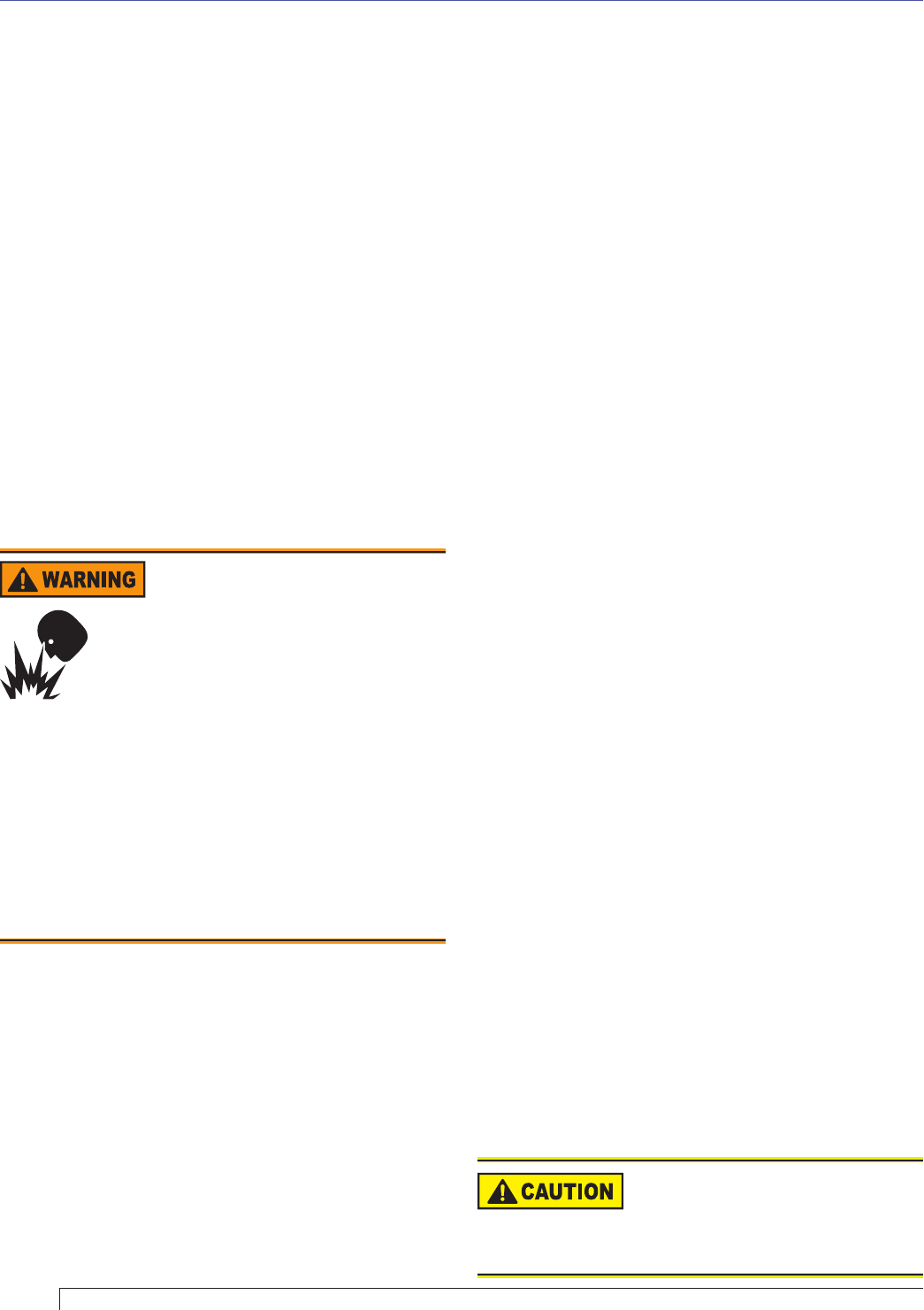
18
Section: Maintenance and Service
Step 4: Recheck smoke level. It should be Zero.
This procedure provides a margin of reserve air
to accommodate variable conditions.
If the draft level has changed, recheck the
smoke and CO
2
(or O
2
)
levels and readjust the
burner, if necessary
Once combustion is set, tighten all fasteners on air
band, air shutter and escutcheon plate.
Start and stop the burner several times to ensure
satisfactory operation. Test the primary control
and all other appliance safety controls to verify
that they function according to the manufacturer’s
specifi cations.
Check the breech draft pressure against the
appliance manufacturer’s recommended setting
(typically + 0.1” W.C.). If the breech pressure is
higher or lower than recommended level, adjust the
appliance breech damper to achieve the specifi ed
setting. Recheck the smoke and CO
2
levels. Adjust
burner air if necessary.
○
○
4.
5.
6.
Maintenance and Service
Annual Professional
Service Required
Tampering with or making incorrect
adjustments could lead to equipment
malfunction and result in asphyxiation,
explosion or fi re.
DO NOT TAMPER WITH THE UNIT OR
CONTROLS - CALL YOUR SERVICE PERSONNEL.
To ensure continued reliable operation, a qualifi ed
service technician must service this burner annually.
More frequent service intervals may be required in
dusty or adverse environments.
Operation and adjustment of the burner requires
technical training and skillful use of combustion test
instruments and other test equipment.
y
y
y
y
Annual service — by qualifi ed service technician
Have the burner inspected, tested and started at least
annually by a qualifi ed service technician. This annual
test/inspection should include at least the following:
Replace the oil supply line fi lter. The line fi lter
cartridge must be replaced to avoid contamination
of the fuel unit and nozzle.
Inspect the oil supply system. All fi ttings should be
leak-tight. The supply lines should be free of water,
sludge and other restrictions.
Remove and clean the pump strainer if applicable.
Replace the nozzle with the exact brand, pattern,
gph, fl ow rate and spray angle.
□
□
□
□
Clean and inspect the electrodes for damage,
replacing any that are cracked or chipped.
Check electrode tip settings. Replace electrodes if
tips are rounded.
Inspect the igniter spring contacts.
Clean the cad cell lens surface, if necessary.
Inspect all gaskets. Replace any that are damaged
or would fail to seal adequately.
Inspect the combustion head and air tube. Remove
any carbon or foreign matter. Replace all damaged
units with exact parts.
Clean the blower wheel, air inlet, air guide, burner
housing and static plate of any lint or foreign
material.
If motor is not permanently lubricated, oil motor with
a few drops of SAE 20 nondetergent oil at each oil
hole. DO NOT over oil motor. Excessive oiling can
cause motor failure.
Check motor current. The amp draw should not
exceed the nameplate.
Check all wiring for secure connections or insulation
breaks.
Check the pump pressure and cutoff function.
Check primary control safety lockout timing.
Check ignition system for proper operation.
Inspect the vent system and chimney for soot
accumulation or other restriction.
Clean all fl ue passages and fl ue pipe. Replace
corroded or damaged pipes.
Clean the appliance thoroughly according to the
manufacturer’s recommendations.
Check the burner performance. Refer to the section
“Set combustion with test instruments”.
It is good practice to make a record of the service
performed and the combustion test results.
Monthly maintenance — by owner
Observe combustion air openings and vent system
for integrity. Openings must be clean and free of
obstructions.
Check oil lines and fi ttings to verify there are no
leaks.
Observe burner ignition and performance to verify
smooth operation.
Shut the system down if you observe abnormal
or questionable operation. Call a qualifi ed service
agency for professional inspection and service.
□
□
□
□
□
□
□
□
□
□
□
□
□
□
□
□
□
□
□
□
□
□
Always keep the fuel oil
supply valve shut off if the
burner(s) is shut down for an extended
period of time.



